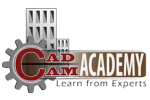CADCAM Academy in Bhubaneswar, Odisha offers comprehensive Proe/CREO courses for Automobile Engineering students. Our expert faculty and practical projects prepare students for a successful career in the automobile industry. Enroll today!
Automobile Engineering is a rapidly evolving field that demands advanced technical skills and practical experience. The use of Computer-aided design (CAD) software and Computer-aided engineering (CAE) tools has revolutionized the automobile industry. Proe/CREO is one of the most popular CAD software used in the automobile industry. At CADCAM Academy in Bhubaneswar, Odisha, we offer comprehensive Proe/CREO courses for aspiring Automobile Engineers.
Our expert faculty members are highly experienced in the field of Automobile Engineering. They provide students with in-depth knowledge and hands-on experience of Proe/CREO software. With our course structure, students get exposure to real-world automobile engineering problems and their solutions. Our students are trained to design automobile components, perform simulations and testing, and optimize product performance.
Automobile Engineering Proe/CREO Courses | CADCAM Academy, Bhubaneswar, Odisha
At CADCAM Academy, we believe in providing practical experience in parallel with theoretical knowledge. Our courses are designed to provide students with a holistic understanding of automobile engineering. During the course, students will work on various design projects, including the design of a car’s 3D model, gearbox, and suspension system. This practical experience enhances the students’ understanding of the practical challenges that come up in the automobile industry.
Our Proe/CREO courses cater to students from all backgrounds, including those who have completed a diploma in Automobile Engineering. The courses provide students with an edge while applying for jobs in the automobile industry. In addition, the courses are in line with the latest industry trends and developments, ensuring our students get the most up-to-date knowledge.
At CADCAM Academy, we also offer placement opportunities for students on successful course completion. We are proud of our placement record, which aims to place our students in leading automobile companies in India and around the world. The Automobile Engineering industry is vast, and graduates can pursue careers in various fields such as Design, Prototyping, Testing, Maintenance, and many more.
In conclusion, Automobile Engineering Proe/CREO courses at CADCAM Academy, Bhubaneswar, Odisha, provide a unique opportunity for students to learn the latest technology used in the automobile industry. Our faculty provide industry insights to students and train them in various aspects of Automobile Engineering, including practical experience. Graduates from our courses can look towards a successful career in the Automobile industry and make a mark in this ever-evolving field. Register for our Proe/CREO courses today to take your first step towards becoming an expert Automobile Engineer.


 Palasuni, Rasulgarh, Bhubaneswa
Palasuni, Rasulgarh, Bhubaneswa